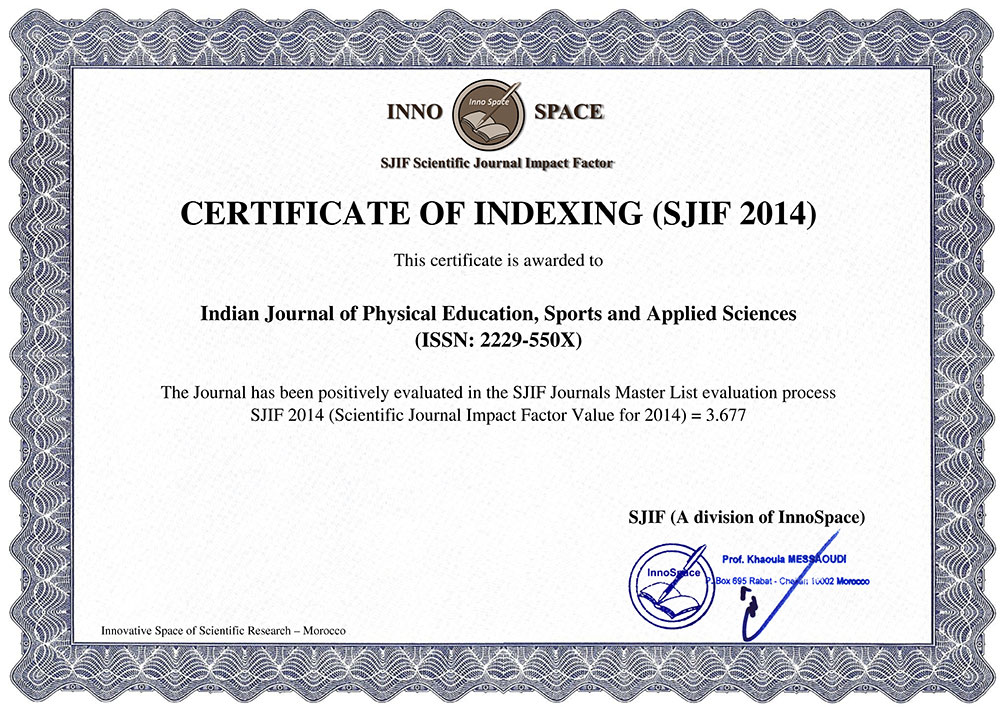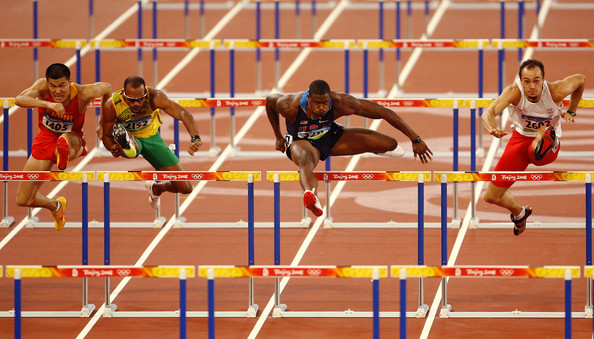DO FEMALE ATHLETES DIFFERS IN TERMS OF SENSO-MOTOR COORDINATION AND TIME MOVEMENT ANTICIPATION ?
Volume 7-Number 3, July, 2017 August 11, 2017| Author name : | Shubhda Bhosle1 & Acharya, Jayashree2 | ||||
|---|---|---|---|---|---|
| Page no : | 48-54 | Volume : | 7 | Issue : | 3 |
doi no.: 05-2016-44975451, DOI Link :: http://doi-ds.org/doilink/08.2017-83111165/
Shubhda Bhosle1 & Acharya, Jayashree2
Affiliations:
1 Ph.D Scholar, Lakshmibai National Institute of Physical Education, Gwalior (M.P.)
2 Professor & Head, Department of Sports Psychology. Lakshmibai National Institute of Physical Education, Gwalior (M.P.)
ABSTRACT
The purpose of the study was to analyze if there is any difference exist among female athletes of various sports in terms of senso-motor coordination and time/movement anticipation ability on Vienna test system. Thirty female university players (five from each) of different sports i.e. cricket, football, hockey, badminton, lawn tennis and swimming were selected. Subjects were tested for two psychomotor variables i.e. time/movement anticipation and reaction time. Subject’s age ranged between 17 to 23 years with a mean and SD of 19.73± 2.14 year. Descriptive statistics and ANOVA was applied to analyze the results. The result showed that the mean and SD of senso-motor coordination of female athletes of badminton, cricket, football, hockey, swimming and tennis were 2.2 ± 0.83, 5.4 ± 3.4, 3.6 ± 2.1, 3.00 ± 1.7, 6.2 ± 6.01 and 3.00 ± 1.58 respectively. The result also revealed that the mean and SD of time/movement anticipation ability of female athletes of badminton, cricket, football, hockey, swimming and tennis were 0.70 ± 0.14, 0.56 ± 0.19, 0.59 ± 0.05, 0.59 ± 0.09, 0.43 ± 0.06, 0.36 ± 0.06, 0.60 ± 0, 0.54 ± 0.17 respectively. The one-way ANOVA has shown difference among female athletes of various sports and they do differ in terms of sensomotor coordination and time movement anticipation (p<0.05).
Keywords: Time/movement anticipation, sensomotor coordination and Vienna test system
DOWNLOAD FULL TEXT: 
BIBLIOGRAPHY
Bhabhor, Mahesh K., Vidja, Kalpesh., Bhanderi, Priti., Dodhia, Shital., Kathrotia. Rajesh and Joshi, Varsha (2013) “A comparative study of visual reaction time in table tennis players and healthy controls” Indian J Physiol Pharmacol 2013; 57(4) : 439–442
Bujak, Zbigniew and Gierczuk Dariusz (2016) Criteria of assessing quick reaction in taekwondo athletes aged 12-25 Science of Martial Arts , 12 : 63
Carolien Hermans(2002), “Anticipation time”, Retrieved from: http:// http://www.du.ahk.nl
Doğan B. (2009). “Multiple-choice reaction and visual perception in female and male elite athletes”. The Journal of Sports Medicine and Physical Fitness, 49 (1): 91-6.
Gierczuk, D. and W. o. Ljach (2012). “Evaluating the coordination of motor abilities in Greco-Roman wrestlers by computer testing.” Human Movement 13(4): 323-329.
Gierczuk, Dariusz., Bujak, Zbigniew., Rowinski, Jan., & Dmitriyev, Aleksey (2012) “Selected coordination Motor Abilities in elite wrestler and Taekwondo competitors” J. Sport Tourism 19, 230-234.
Koçak S. (2010). “Coincidence-anticipation timing and reaction time in youth tennis and table tennis players”. Perceptual Motor Skills, 110 (3 Pt 1): 879-87.
Mishra, Anshuman (2013). “Combined effect of mental and physical training on selected psychomotor variable of cricketers” unpublished master’s thesis LNIPE April 20.







